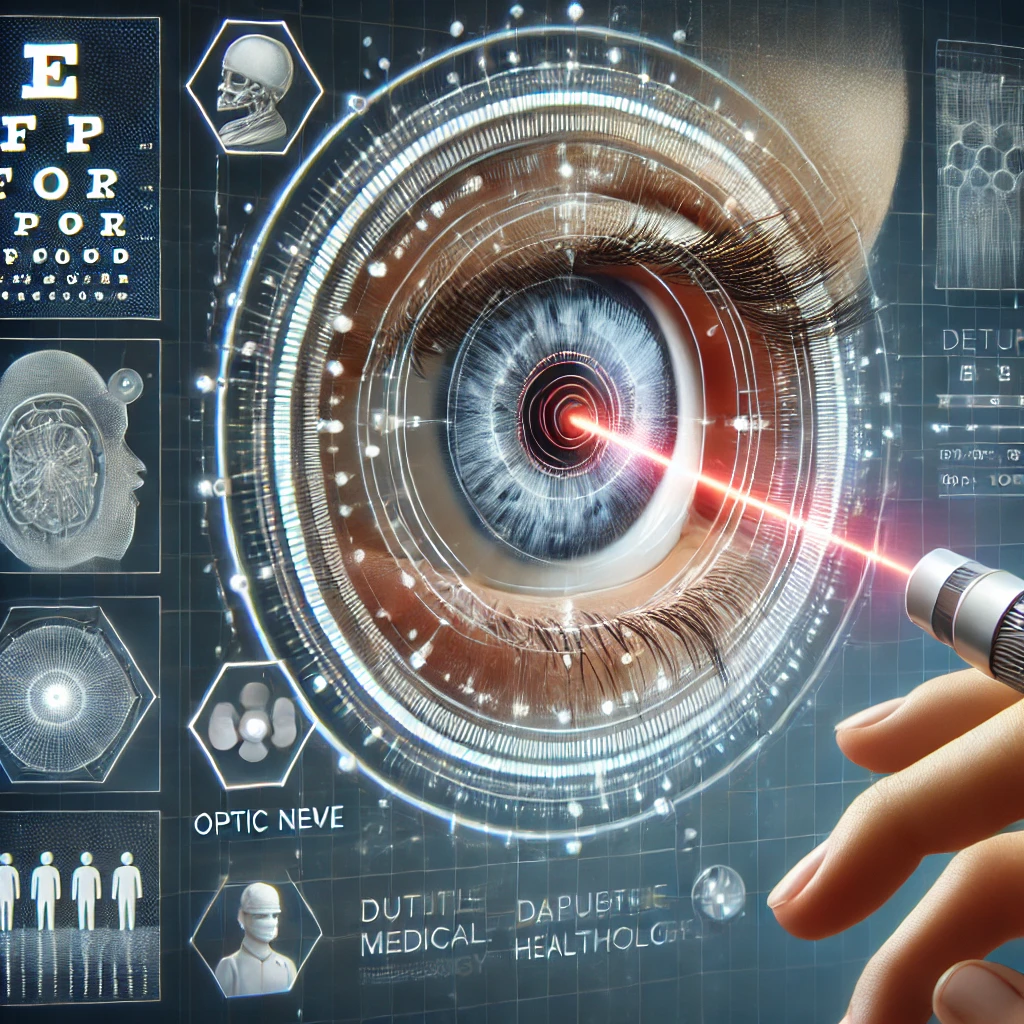Retina scanning is one of the technologies spreading waves across different fronts, mainly within the health sector. In terms of its characteristics, this advanced technology is not only advanced, but it also teaches a lesson about security and plays a significant role in diagnosing health conditions. Let’s talk more about the science behind retina scanning and its mechanism and applications in the health sector.
Understanding the Basics of Retina Scan Technology
Retina scan technology uses near-infrared light to map the unique pattern of blood vessels that reside at the back of a person’s eye. Because every human has a distinct pattern of retinal blood vessels, this method is extremely accurate for identification purposes. The retina scan captures all these intricate details and converts them into a digital template. Retinal patterns are less easy to replicate than fingerprints; therefore, the technology is secure and sound. The fact that it is non-invasive makes the procedure more adoptable, thus suitable for different applications in healthcare and security systems where retina recognition could be used.
How Retina Scans Work in Healthcare Diagnostics
In the medical arena, retina scanning is applied as a diagnostic device that diagnoses the initial symptoms of diseases. As far as the eye is concerned, its retina is connected directly to the brain. Any disorder regarding the retina can be a symbol for other health-related disorders. The technology of retina scans now reveals the early stages of glaucoma, diabetic retinopathy, and even cardiovascular diseases. For example, retina scanning can diagnose high blood pressure through damaged blood vessels inside the eye. This technology would be invaluable as a tool that could be added to every routine eye exam provided by healthcare providers to ensure patients receive preventative measures and better outcomes for these patients. It also allows for the tracking of existing conditions, thus enabling one to make instantaneous adjustments in treatment plans.
Advantages of Retina Scans in Medical Security
- Enhanced Data Security: Retina scan security will protect delicate data from health organizations much better than the other choices.
- Cyberattack Protection: Healthcare centers are also vulnerable to cyberattacks. Thus, retina scans offer a much better security system than passwords.
- Security Layer of Biometrics: Retina recognition offers one more security layer of biometrics, accessible only to authorized staff, in health facilities.
- Lower Possibility of Identity Theft: The accuracy of retina scans effectively reduces the likelihood of identity theft in health environments.
- Accuracy and Reliability: Retina scanning yields high degrees of accuracy and reliability, allowing patients to access safely without disturbing smooth healthcare operations.
- Better Secrecy: The introduction of retina scans will ensure the privacy of patients and guarantee that all confidential information is safeguarded.
- Functional Quality: Security is enhanced without disrupting smooth healthcare operations.
- Future-Proof Security: Considering identity theft is common practice, retina scanning ensures that the security is strong and future-proof.
Retina Recognition: A New Frontier in Disease Monitoring
Other areas of potential application of retina recognition include disease monitoring. In chronic conditions such as diabetes, for which regular monitoring is important, this retina scanning may become a rapid and non-invasive check on the progress of the disease. The technology captures minute changes in the blood vessels of the eye, which are so important to detect in time before the condition becomes worse. Such would be much better dealt with if detection could be made much earlier: before this condition irreversibly damages vision. With an increased population of healthcare providers who are now using retina scan technology in diagnostic procedures, patients are monitored quickly and accurately while with early intervention, they reduce health costs.
Retina Scanning vs. Other Biometric Technologies in Healthcare
This gives retina scanning a headway about its counterparts, such as fingerprint or iris scanning, in the aspect of precision. Fewer possibilities of false positives assure health environments with this form of security as it cannot afford imperfection when it comes to accuracy. Unlike fingerprint scanners, the cuts or dirt might affect these, but not retina recognition. An even less invasive approach than iris scanning appears to be retina scanning. Iris scanning sometimes requires proximity to the scanner, which could make retina scanning more hygienic as well as more patient-friendly, especially in medical environments where cleanliness is of vital importance.
Future Implementation of Retina Scan Technology in Healthcare
In the future, retina scanning technology will indeed update the security and care of patients in healthcare systems. Improved artificial intelligence would make retina scans far more powerful tools for diagnostics, meaning that diseases could be predicted much before symptoms show up. What AI would add to retina recognition systems is real-time analysis and actionable insights, which would make it available immediately after a scan to the healthcare professional. In addition, with the advancement and availability of portable retina scanners, remote or underserved areas can be reached easily; thereby providing life-saving diagnostic capabilities to populations that were hitherto deprived of any advanced medical technologies.
Final Thoughts
The retina scan goes beyond being used for security purposes; its uses in the medical field are practically infinite. It not only enhances safety in medical institutions where retina scans take place but also provides an avenue for the diagnosis of patient conditions. With these advances, we would expect more in terms of the protection of patients’ data and better treatment.







